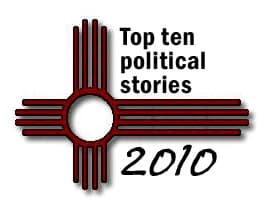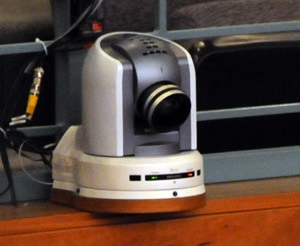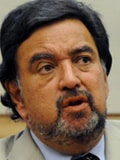 The Democratic wave that carried Barack Obama to the presidency in 2008 was countered in 2010 by a GOP wave that led to lots of Republicans being elected in New Mexico and Washington.
The Democratic wave that carried Barack Obama to the presidency in 2008 was countered in 2010 by a GOP wave that led to lots of Republicans being elected in New Mexico and Washington.
One thing that’s notable about NMPolitics.net’s top 10 stories of 2010 is that a number of them are policy related. Even in an election year, politicians in Santa Fe and Washington still found a way to get some things done.
Read on for NMPolitics.net’s rankings of the top 10 political and government stories of 2010.
Honorable mention: Cap and trade
Despite Democratic control of Congress, Washington failed to approve a cap-and-trade bill to reduce carbon emissions. His vote for the doomed legislation in 2009 may have helped ensure that U.S. Rep. Harry Teague’s time in Congress was short.
But New Mexico and the West moved forward with their own efforts to reduce carbon emissions in 2010.
The N.M. Environmental Improvement Board approved a state carbon pollution reduction program earlier this month. The unique state program was applauded by environmentalists, fought by the industries it affects, and criticized by many as something that should be done by Washington, not individual states that must compete for business with their neighbors.
Meanwhile, thanks to voters in California, the Western Climate Initiative, of which New Mexico is a part, stayed alive. The EIB’s vote earlier this month also approved New Mexico’s participation in the regional cap-and-trade system starting in 2012, but California’s participation was necessary if the initiative was to have an impact.
The initiative is on shaky ground. Though several governors joined the partnership, only California and New Mexico have enacted rules that actually allow them to participate. And incoming N.M. Gov. Susana Martinez wants to reverse the EIB’s vote. Whether she can do that is unclear.
10: The new Obama
Between Obama’s tax compromise with Republicans; the repeal of Don’t Ask, Don’t Tell; a new nuclear arms pact with Russia; and a bill to give health benefits to 9/11 responders, the lame duck session of Congress that just ended was arguably the most productive in decades.
Obama said after his party was shellacked in November that he was largely to blame for not delivering on his promise of bipartisan governance and cooperation. He made efforts to do things differently during the lame duck session. Many Democrats, including those from New Mexico, were upset with Obama’s tax compromise.
But some have argued that the compromise opened the door for the lame-duck approval of other legislation that had been sought by Democrats.
Time will tell if the new Obama can continue to be this productive.
9: Wilderness bill fails

The Organ Mountains (Photo by Heath Haussamen)
Many in the Las Cruces area have been pushing for years to have the Organ Mountains and other land in Doña Ana County designated as wilderness – the highest level of protection from the federal government.
With the election of Teague, a Democrat, to represent the 2nd Congressional District in 2008, many believed the chances for passage of such legislation were greatly improved.
But Teague’s tenure is coming to an end without a wilderness bill passing. He never announced support for or opposition to the legislation, or said what he wanted such a bill to look like. Instead, he largely stayed away from the issue, except to say he supported conservation but shared opponents’ concerns about border security.
That meant a push by New Mexico’s U.S. senators wasn’t enough to get the bill passed. With Republican Steve Pearce, a critic of wilderness, replacing Teague in January, any efforts to protect the Organ Mountains and other land are probably going to look much different next year.
8: Health care reform
The controversial health-care reform bill pushed through by Washington Democrats colored the 2010 election. Republican candidates used it to campaign against big government. Many hailed it as long overdue and much needed. Some on the left were upset that it didn’t go further. Lawsuits followed (New Mexico hasn’t filed suit) and are pending.
The legislation illustrates the tension between the left and right in these polarized times. Look for more talk from the right about “Obamacare” as the 2012 election approaches.
7: Increased transparency

The webcam in the back of the Senate chamber. (Photo by Heath Haussamen)
New Mexico took a huge leap forward in government transparency in 2010 with the creation of the Sunshine Portal and increased legislative webcasting.
People now have easier access to financial information from state government than they ever have before. And New Mexico is one of the states at the forefront of utilizing the Internet to provide such access to information.
There are more steps to be taken. Audio and video webcasting should be expanded to all policymaking bodies in state government. Webcasting should be archived online. The sunshine portal should include real-time information, not just recent information. Actual documents should be scanned and put online.
But New Mexico took significant steps out of the darkness in 2010.
6: Las Cruces gains prominence
The state’s second-largest city gained prominence as a result of the 2010 election. Its longtime district attorney was elected governor, but there’s another significant player from Las Cruces who gained.
State Rep. Joseph Cervantes, D-Las Cruces, has already been a prominent dealmaker in Santa Fe. He’s considering trying to form a bipartisan coalition to become speaker.
Regardless of whether he becomes speaker, Cervantes and a handful of other House Democrats from Southern New Mexico – who have already announced their support for a Cervantes coalition – have enough votes to control the House. They can go with their party on contentious issues, or they can work out deals with Republicans and push legislation through in a bipartisan manner.
Look for politicians from Las Cruces and Southern New Mexico to play a big role in Santa Fe in 2011.

Martin Heinrich
5: Heinrich survives; Teague loses
Considering the GOP wave that hit Washington in 2010, it’s simply impressive that freshman U.S. Rep. Martin Heinrich, D-N.M., survived in a contested district that, before him, had always been held by a Republican. He summed up his own re-election this way:
“Those of us who won did so by having the courage to stand by our legislative decisions – to run on, and not away from, our records.”
Heinrich is a favorite of progressives, but he’s also found a few areas of agreement with the right – most notably, work for the military and national labs. His re-election solidifies his position as one of the heavy hitters in New Mexico politics.
Teague, on the other hand, was a casualty of the GOP wave. I analyzed his tenure earlier this week. Democrats fought for decades to win this seat, and they weren’t able to keep it for a second term.
The state’s other congressman, Democrat Ben Ray Luján, had a more difficult time winning re-election than expected. Look for a bargain during the 2011 redistricting negotiations that shifts more Republican voters into the 2nd Congressional District that’s about to be represented by Pearce and more Democrats into the districts of Heinrich and Luján.
4: Republican gains in N.M.
2010 was historic for Republicans in New Mexico. Voters elected a Republican governor, the first Republican secretary of state in 80 years, and gave the GOP eight new seats in the state House.
Republican Dianna Duran is the first Republican secretary of state since E.A. Perrault served from 1929-1930. During Perrault’s tenure, 37 of 49 House members were Republicans – and you have to go back that far to find a time when Republicans had greater influence in the House than they will in January (33 Republicans to 37 Democrats).
The Senate is already controlled by a bipartisan coalition. The possibility of a bipartisan coalition in the House to make Cervantes speaker could give Republicans an even greater voice.
Republicans generally campaigned on a platform of less government regulation, lower taxes, and greater accountability and transparency. They’ll have a lot of influence over policy in Santa Fe come January and a chance to back up their words with action.
3: Economic woes continue
The struggling economy continued to be the issue at the forefront of voters’ minds in 2010, and it had a massive impact on the election. Voters decided to give Republicans a greater voice in government in Washington and Santa Fe largely because of economic issues including high unemployment and falling home values.
The state plugged a massive budget deficit in 2010 with spending cuts, tax increases and federal money. There’s another big deficit to deal with next year. How long will these troubles continue? Time will tell.

Bill Richardson
2: Richardson leaves office
Bill Richardson’s effect on New Mexico can’t be understated. With the spaceport and Rail Runner and other ideas, he convinced New Mexico to dream big. With his presidential run, he excited New Mexicans (his popularity reached 74 percent in May 2007). And with the pay to play scandals that came to define his administration, he deeply disappointed New Mexicans.
Richardson likes doing things big, and he came back to New Mexico to run for governor in 2002 as a big fish in a little pond. By the end, though, this little pond couldn’t wait to get rid of him. That’s a primary reason Lt. Gov. Diane Denish didn’t win the governor’s race.
Many will analyze Richardson’s tenure (I published my own analysis on Wednesday), but one thing is undeniable: Bill Richardson left his mark on New Mexico.

Susana Martinez
1: Martinez wins governor’s race
When an article published on this site in July 2009 labeled Susana Martinez as a “game changer” in the governor’s race, many laughed and dismissed it.
They were wrong to do so. Martinez is the first woman to be elected governor of New Mexico and the first Hispanic woman to be elected governor of any state in the country. She’s a Republican, so the historic nature of her victory has made her a national GOP star even before she’s taken office.
Of course, Martinez still has to answer some questions – like whether she can govern a state – before the national stardom is justified. But she does have an inspiring story as a Hispanic woman and district attorney who is making the leap to being talked about as a potential 2012 vice presidential candidate.
So far, her cabinet appointments have been impressive. Even many critics concede that she has generally selected qualified people.
That’s a good sign, because these are serious times that call for serious leadership. Martinez has a steep learning curve, so let’s hope she adjusts to her new job quickly. 2011 is going to be an interesting year…